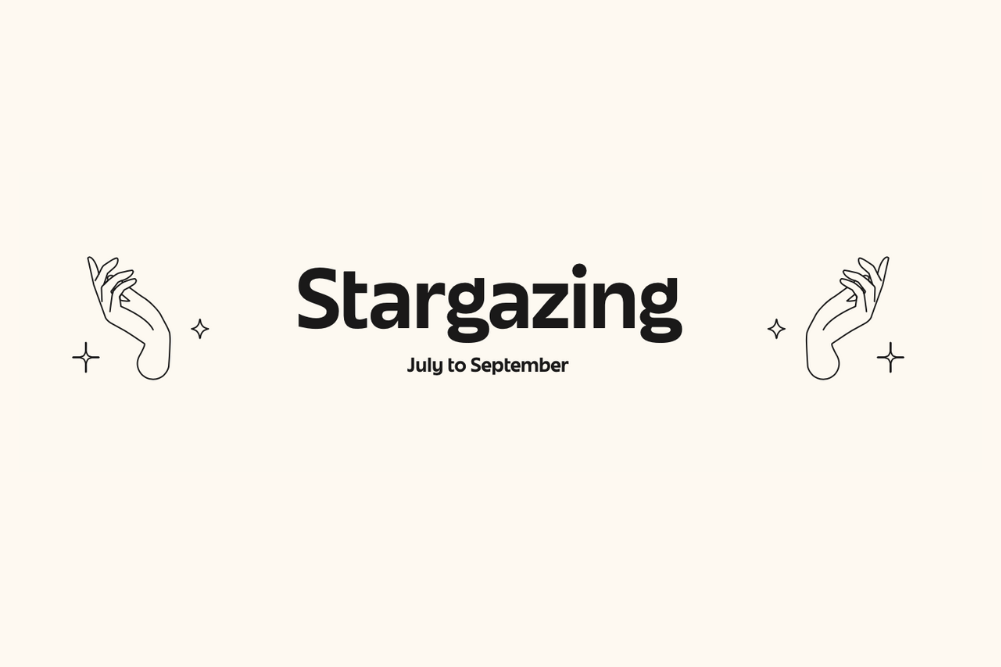Mythology, power and success with fixed stars
The magic and meaning of fixed stars channel ancient wisdom into your birth chart for enhanced success and prominence.
The three zodiacs
The fundamental components that make up a horoscope or birth chart include the Zodiac signs, planets and houses. The signs of the zodiac in Western astrology are based on the seasonal relationship of the Sun to the Earth. The first day of autumn (spring in the Northern Hemisphere) is the first day of Aries, and the sky is then divided into 12 equal segments or zodiac signs of the Sun’s apparent path around the Earth. This is more formally called the Tropical Zodiac as it is tied to the seasons.
But there is another zodiac, which is based on dividing the sky into twelve equal segments starting with the first star of Aries. This is called the Sidereal (star-based) Zodiac and is used primarily by Indian (Vedic) astrology and by Western Sidereal astrologers, and was the zodiac used by our Babylonian ancestors.
At the dawn of Western astrology, the Tropical and Sidereal Zodiacs coincided. On the first day of spring, the first star of Aries rose with the Sun. Over time, because of the way Earth wobbles, the two zodiacs have drifted apart, so that they are now about 24 degrees apart. To give you an idea about how much space that is, a full moon is about a half-degree wide.
“Certain bright fixed stars, when combined with any of their natal planets or angles, like the Ascendant and MC, produce a significant rise in stature.h”
However, there is a third zodiac, a Constellational Zodiac. This zodiac is made up of the actual constellations in the sky, which are of varying sizes and sometimes overlap. Aries is a tiny constellation compared to the constellations of Virgo or Pisces, which are giant. In the Constellational Zodiac we’re in the domain of fixed stars.
We call them fixed stars because the ancient Greek-speaking astrologers called the planets wandering stars. The starry fields through which the planets wandered appeared to be fixed to a rotating sphere, the night sky. For example, the constellation of the Southern Cross moves across the sky, but the stars that make up the cross appear to stay in fixed relation to each other. (I say “appear” because fixed stars do move a tiny bit over time, but nothing that is really noticeable to the naked eye over the course of one or several lifetimes). Fixed stars have a long history in astrology, and there are three different ways of applying them to your birth chart.
The astrological method
This method has the longest history and dates to the dawn of Western astrology. It has been in use for approximately 2000 years. There are several astrological methods for using fixed stars in the natal chart.
Vivian Robson, W J Tucker, and Diana K Rosenberg are three twentieth-century astrologers who published books on using stars with the natal chart. But for this article I’m going to take you back to the beginning of the astrological tradition and look at the ancient astrologer Anonymous of 379. His textbook survived the ravages of time, but the title page is missing so we don’t know his name. Let’s call him Anon379.
Living in Rome and writing in 379ce, Anon379 noticed that sometimes a person’s life would seemingly transcend what was indicated by their birth chart. In his effort to understand how and why, he noticed that certain bright fixed stars, when combined with any of their natal planets or angles, like the Ascendant and Medium Coeli (Midheaven/MC), produced a significant rise in stature.
Anon379 specifically stated that he was only going to write about those fixed stars he was able to observe himself in the charts of his clients. He observed and delineated twenty-eight stars. If you have a copy of your birth chart keep it handy to help you follow the steps below. If you don’t have a birth time, you can look up your planetary positions for the day you were born.
The visual method: Using the pictures in the sky
Another method to connect fixed stars to your birth chart is through visual astrology. You simply look at the positions of the planets when you were born and note where they fall within the constellations. An easy way to do this is to download an astronomical app to your smartphone or computer. Many low and no-cost (freeware) options exist for this. Be sure to turn on the constellation lines, so the screen shows the figures or shapes and images of the different constellations. Set the date (and place) to your birthday/place. Now look and see where the planets fall in the constellations.
Is Venus between the claws of Scorpio? If so, maybe that is why you tend to be nervous around love matters. Perhaps you need to contemplate being more assertive and direct. Is your Mars near the head of Taurus? Perhaps that is a sign you need to grab the bull by its horns.
This practice is a fun way to contemplate the symbolic arrangements of your planets in the pictures of the constellations. Grab a list of planetary and zodiacal keywords and create your own program of self-exploration.
The mythological method: Star stories
Astrologers will also use the myths of certain stars or their reputations and draw that in to a planet’s meaning. If one of your planets is close to a particular star, look up the meaning and myth of that fixed star and combine that with your understanding of your natal planets. There are abundant online resources to help you with this.
If your sun is close to a fixed star, check out the myth/story about that star, and see if it informs your understanding of your sun, the house it rules and the house it is placed in. This star might influence your personality, or you might encounter the mythology of the fixed star in the house ruled by Leo. The story may give you a hint on how to maximise its promise. You can do this with all your planets, although not all planets may be close to stars. If you know the details of your birth chart, any fixed star on the Ascendant or MC may be particularly poignant in your life.
How to read the bright fixed stars using the astrological method
Anon379 gave several rules for interpreting these stars in a chart:
- When a planet is in the same sign with any one of the 28 Bright Stars, they mix. Think of adding spices to a meal, it is like a mixing of flavours. Consider the star’s indication as adding flavour to the planet.
- When a fixed star is conjunct the Ascendant or MC it indicates good fortune at an early age. When conjunct the Descendant (point opposite the ascendant), prosperity comes around middle age, or through marriage. When conjunct the Imum Coeli (IC), Anon379 says “great luck will arrive in old age.” In addition, if one of these stars is on the Ascendant, “life will be glorious, practical, leadership-oriented, busy with many pursuits, and bountiful in resources.”
- Look up your moon’s zodiacal longitude and celestial latitude. The zodiacal longitude of your moon is simply the degree of your moon in its sign in your chart. The latitude of your moon refers to the moon’s distance north or south of the ecliptic. If the moon matches any of the Bright Stars, especially by its sign placement, Anon379 says “a life generated at such a moment will be brilliant, notable, and easily traversed.”
- The Bright Stars are divided into nine categories (see chart), each described as a blending of two planets. I’ll go into detail with explaining the Venus/Mercury group, as an example, and then give a general overview for the other eight. If you already understand the nature of the planets, then you can combine their keywords to come up with a star profile.
The Venus-Mercury star group: Spica, Vega, Formalhaut, Deneb Adige, Alphecca
Conjunct Ascendant | Indicates an individual who is “learned in many subjects, philosophical, creative, industrious, knowledgeable, and self-taught almost entirely. Life is easily traversed.” If you know your Venus and Mercury keywords, this is exactly the kind of thing you would expect.
Conjunct Mars | “Weaving of the pragmatic affairs so as to rejoice in all things written.” This will be especially true for those with Aries, Scorpio, Gemini, or Virgo rising, as these are the signs ruled by Mars or Mercury.
“When a fixed star is conjunct the Ascendant or MC it indicates good fortune at an early age.”
Conjunct Jupiter | “This will increase the luck greatly”, even more so if you have Sagittarius or Pisces rising as these are the two signs ruled by Jupiter.
Conjunct Saturn | “Practical knowledge in medicine, prognostication, and learning from obscure texts”, especially so if Capricorn or Aquarius are rising (the two Saturn ruled signs).
The Jupiter-Mars group: Regulus, Acturus, Altair, Antares
If you have a Jupiter-Mars Star prominent on an angle, like your Ascendant or Midheaven, this gives you honour and skills with strategy. It can show you might rank high in urban affairs, land management, etc. You might tend towards administration, and at times may intimidate others with your leadership status.
“They are in command, self-controlled, in charge of their own movement, unruly, insubordinate, shrewd, outspoken, contentious, accomplished, manly, inclined to conquer, harmed by enemies, yet acquiring of many resources and great wealth. These stars bring a marked greatness to the soul and love of honour.”
The Jupiter-Saturn star group: Rigel, Alnilam, Menkalinam, Rukbat, Algol
If you have a Jupiter-Saturn Star in your chart you may find it easier to pull in resources and create wealth. “Those born under these stars love farming and building houses. If the Moon is making an angle to a Jupiter- Saturn Star, marking the Ascendant or Midheaven in the daytime, this combination can lead to good manners. There can be stability and honour through elders, a noble-minded temperament, and an inclination towards exchange. A person born under these stars can also endure long periods of suffering, yet there will be a marked prudence, and a love of home and family.”
This delineation favours anyone born during the day time, because both Jupiter and Saturn have a special strength, known as being in “sect” in the charts of those born during the day time.
The Mars (Saturn) star group: Sirius, Pollux
Sirius and Pollux seem to only get Marsian qualities, although the manuscript is unclear and may indicate a Mars/Saturn mix. This can emphasise recklessness, rashness, or boldness, and one is warned of excessive hubris. These are all qualities associated with Mars.
The Jupiter-Mercury star group: The north scale, Castor
With a Jupiter-Mercury Star prominent in your chart, you might be educated, political and industrious, you might love music and symmetry, and you’ll likely be popular. You may also be multitalented or a jack of all trades, and “full of great luck.”
The Mars-Mercury star group: Bellatrix, Procyon, Betelgeuse, Alpheratz
Mars-Mercury Stars give courage and strength. On the flip side this energy might tempt you into breaking the rules, fibbing or exploiting others for your benefit. A tough fighter, you seek approval and may tend towards being wild and carefree, especially with dating and relationships, when you’re young. If so, you’ll settle down as you age. You might also be good at imitating things.
The Jupiter-Venus star group: Toliman, Acamer
With stars that share the nature of the two benefic or helping planets comingling, these stars are more positive and are associated with pleasure, beauty and music. You might be a good listener or have pertinent advice to give.
The Saturn-Venus star group: Denebola, Zosma, Alphard
These stars bring luck and resources and create a tough exterior around delicate emotions. If this is you, you can obtain honour “through self-control, mastery, abstaining from certain meats, etc. Those born under these stars are learned through forbidden or underground books. They love beauty and can become well-versed on heavenly matters.” These stars are a good indication for a future astrologer. Perhaps Anon379 had this star rising in his own chart.
The Mars-Venus star group: Aldebaran, a very potent star
Anon379 says this star has twice the power of all the other Bright Stars. He claims, “An appearance of this star at birth creates a life of good luck and abundance. It can inspire the founding of lands and cities, and a tendency towards administrative affairs.” You might achieve some notoriety and will fare better than average in generating income.
And there you have it. The beauty of this system is that it applies the planetary astrology you already know to inform the interpretation of these bright fixed stars. May they illumine your journey of self-discovery.
Quotes from Anonymous of 379ce in this article come from the forthcoming translation and commentary by Andrea Gehrz and Kenneth D Miller.
Fixed stars example chart
Not every chart will be impacted by fixed stars, but those that are usually indicate a rise in prominence for the individual and can point to success via any planets associated with the fixed star in question.
Let’s look at Pope Benedict XVI, who was known for his conservative and dogmatic views. He was only the second Pope in church history to voluntarily retire from the position to lead a quiet retirement living in the Vatican.
In his birth chart, Mars at 29 Gemini is in the same degree as star #12, Menkalinam, a star from the Jupiter/Saturn group. Pope Benedict’s Mars rules his ninth house of church and traditional religious views, where he has one of Mars’ signs, Scorpio. His Mars also rules the second house of security and wealth, where he has Mars’ other sign, Aries. Mars is physically in the whole sign fourth house of home and mind.
Star #12, Menkalinam, can help with “stability and honour through elders, a noble-minded temperament, and an inclination towards exchange.” A noted writer, Pope Benedict XVI is known as a guardian (Mars) of orthodoxy. Since this star is of the nature of Jupiter and Saturn, it’s also useful to look at these planets in his chart. Jupiter rules the first (self) and tenth (Career) houses, while Saturn is placed in the tenth house of career and success. The star combines these forces and boosted the power of his Mars to find a home (fourth house) in the Church (ninth house).
| # | Common Name | Nature |
2000 Tropical Longitude |
2000 Tropical Latitude |
| 1 | Spica | Venus and Mercury | 23 LIBRA | -02:03 |
| 2 | Vega | Venus and Mercury | 16 CAPRICORN | +38.47 |
| 3 | Fomalhaut | Venus and Mercury | 4 PISCES | -21:08 |
| 4 | Deneb Adige | Venus and Mercury | 6 PISCES | +59:54 |
| 5 | Alphecca | Venus and Mercury | 13 SCORPIO | +44.19 |
| 6 | Regulus | Jupiter and Mars | 30 LEO | +00:27 |
| 7 | Acturus | Jupiter and Mars | 25 LIBRA | +30:44 |
| 8 | Altair | Jupiter and Mars | 2 AQUARIUS | +08:52 |
| 9 | Antares | Jupiter and Mars | 10 SAGITTARIUS | -04:34 |
| 10 | Rigel | Jupiter and Saturn | 17 GEMINI | -31.07 |
| 11 | Alnilam | Jupiter and Saturn | 24 GEMINI | -24:30 |
| 12 | Menkalinam | Jupiter and Saturn | 30 GEMINI | +21:30 |
| 13 | Rukbat | Jupiter and Saturn | 17 CAPRICORN | -18.22 |
| 14 | Algol | Jupiter and Saturn | 27 TAURUS | +22.25 |
| 15 | Sirius | Mars (Saturn) | 15 CANCER | -39:36 |
| 16 | Pollux | Mars (Saturn) | 24 CANCER | +06:41 |
| 17 | The North Scale | Jupiter and Mercury | 20 SCORPIO | +08.29 |
| 18 | Castor | Jupiter and Mercury | 21 CANCER | +10:05 |
| 19 | Bellatrix | Mars and Mercury | 21 GEMINI | -16:48 |
| 20 | Procyon | Mars and Mercury | 25 CANCER | -16:01 |
| 21 | Betelgeuse | Mars and Mercury | 29 GEMINI | -16:01 |
| 22 | Alpheratz | Mars and Mercury | 15 ARIES | +25.40 |
| 23 | Toliman | Jupiter and Venus | 30 SCORPIO | -42:35 |
| 24 | Acamar | Jupiter and Venus | 24 ARIES | -53.45 |
| 25 | Denebola | Saturn and Venus | 22 VIRGO | +12:15 |
| 26 | Zosma | Saturn and Venus | 12 VIRGO | +14:19 |
| 27 | Alphard | Saturn and Venus | 28 LEO | -22.22 |
| 28 | Aldebaran | Mars and Venus | 10 GEMINI | -05:28 |
Chart of Bright Fixed Stars from Anonymous of 379ce. The rate of motion is so miniscule, changing at about 1.3 minutes over 100 years, meaning these positions from 2000ce are still valid today. These positions have been rounded up, so that a star at 23 Libra, like Spica, will sit with planets at 22’00 – 22’59 in Libra, which is technically the twenty-third degree of Libra.








